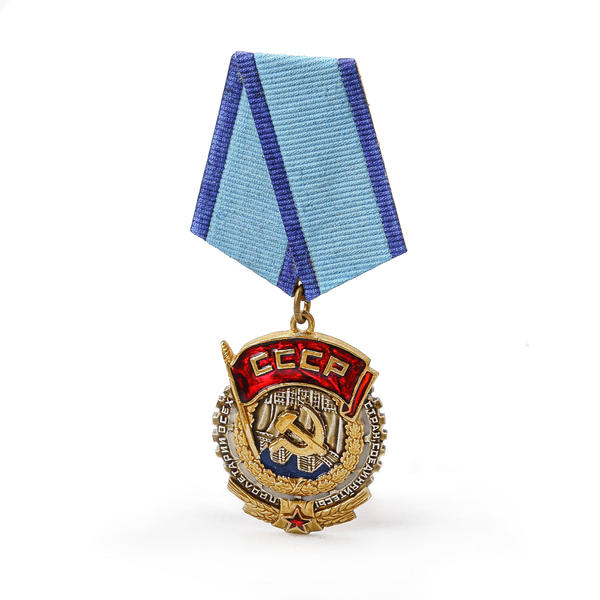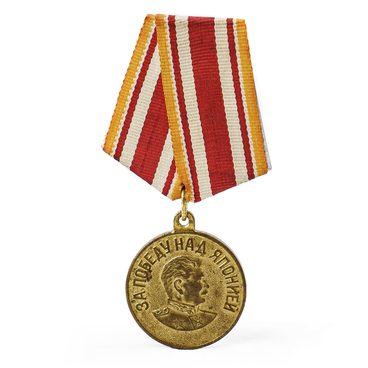The Order of the Red Banner of Labor became a decoration used to honor the most significant labor achievements. It was handed over both to the civilian population and military organizations for outstanding merits in activity.
For the first time such an award emerged in the Russian Soviet Federative Socialist Republic on December 28, 1920. Similar decorations existed in other socialist republics, but eight years later a single order for all was established. It was not until 1931 that the presentation of the new decoration began.
All worthy decorations and labor merits were described in detail in a special document. The order could be awarded to ordinary people, enterprises, organizations, settlements, which made a significant contribution to the development of the country in various fields: medicine, education, production and agriculture. Those who achieved impressive results in their activity were also awarded. During the Great Patriotic War, the achievements of home front workers were encouraged by the order.
Nikita Menchukov was the first to receive the republican decoration in 1921. A peasant from a village near Gomel wasn’t afraid to come down on the ice and independently destroyed an ice jam, which the demolition workers could not cope with. So he saved the bridge from destruction. The peasant was awarded the Order of the Red Banner of Labor of the RSFSR number 1. The first all-Union decoration was awarded to three USSR Air Force mechanics, who distinguished themselves while searching for the airship Italia.
Military groups, too, received the decoration for labor achievements for the good of the country. The 2nd Amur Rifle Division, the 220th Slavic Regiment of the 74th Rifle Division and the 19th Far “Eastern Ultimatum” Air Detachment became the holders of the Order for their heroic flood control efforts.
This decoration could be received several times throughout life. Therefore, history knows the recipients of multiple Orders. The most famous among them is Nikolai Smelyakov, who was awarded six times. Nikolai Smelyakov worked at the Krasnoye Sormovo plant and made a career from deputy chief metallurgist to the director. Then he held the positions of Minister of Engineering and Deputy Minister of Foreign Trade of the Soviet Union.
The appearance of the order has changed several times. Artist Sergei Kuklinsky was the author of the first sketch. Viktor Kupriyanov developed the design of the All-Union badge, which was comlemented by the Leningrad Mint’s medalist Vladimir Golenetsky. All the variants shared common elements: a gear and wheatears – the symbols of industry and agriculture, as well as a sickle and hammer – the symbols of the Soviet Union. Each issue of the award was supplemented by the motto: ‘Workers of the world, unite! ’
More than 1.2 million people were awarded over the 63 years of the decoration’s existence. The last awarding took place at the end of 1991. Then Joakim Sharoev received the order. He worked at the Russian Academy of Theater Arts and made a significant contribution to the development of pop music in the Soviet Union.
For the first time such an award emerged in the Russian Soviet Federative Socialist Republic on December 28, 1920. Similar decorations existed in other socialist republics, but eight years later a single order for all was established. It was not until 1931 that the presentation of the new decoration began.
All worthy decorations and labor merits were described in detail in a special document. The order could be awarded to ordinary people, enterprises, organizations, settlements, which made a significant contribution to the development of the country in various fields: medicine, education, production and agriculture. Those who achieved impressive results in their activity were also awarded. During the Great Patriotic War, the achievements of home front workers were encouraged by the order.
Nikita Menchukov was the first to receive the republican decoration in 1921. A peasant from a village near Gomel wasn’t afraid to come down on the ice and independently destroyed an ice jam, which the demolition workers could not cope with. So he saved the bridge from destruction. The peasant was awarded the Order of the Red Banner of Labor of the RSFSR number 1. The first all-Union decoration was awarded to three USSR Air Force mechanics, who distinguished themselves while searching for the airship Italia.
Military groups, too, received the decoration for labor achievements for the good of the country. The 2nd Amur Rifle Division, the 220th Slavic Regiment of the 74th Rifle Division and the 19th Far “Eastern Ultimatum” Air Detachment became the holders of the Order for their heroic flood control efforts.
This decoration could be received several times throughout life. Therefore, history knows the recipients of multiple Orders. The most famous among them is Nikolai Smelyakov, who was awarded six times. Nikolai Smelyakov worked at the Krasnoye Sormovo plant and made a career from deputy chief metallurgist to the director. Then he held the positions of Minister of Engineering and Deputy Minister of Foreign Trade of the Soviet Union.
The appearance of the order has changed several times. Artist Sergei Kuklinsky was the author of the first sketch. Viktor Kupriyanov developed the design of the All-Union badge, which was comlemented by the Leningrad Mint’s medalist Vladimir Golenetsky. All the variants shared common elements: a gear and wheatears – the symbols of industry and agriculture, as well as a sickle and hammer – the symbols of the Soviet Union. Each issue of the award was supplemented by the motto: ‘Workers of the world, unite! ’
More than 1.2 million people were awarded over the 63 years of the decoration’s existence. The last awarding took place at the end of 1991. Then Joakim Sharoev received the order. He worked at the Russian Academy of Theater Arts and made a significant contribution to the development of pop music in the Soviet Union.




